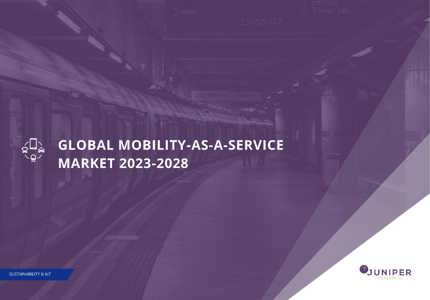Are Autonomous Vehicles Ready for the Road Ahead?
Driverless vehicles have taken the spotlight over the past year, with autonomous vehicles (AVs) now operating in US cities like San Francisco and Phoenix via Google’s Waymo and Tesla gearing up for its Texas debut.
These AVs are being hailed as potential game-changers for urban issues, promising improvements in last-mile mobility, traffic reduction, lower emissions, and more affordable transit options. But, as these vehicles are still in their early stages, it's worth asking: can AVs truly deliver on these ambitious promises and reshape urban life for the better?
Are They Economical?
The road to profitability for driverless taxi companies is shaping up to be a long and challenging one.
Take Waymo, for example. Google's experimental division that operates at a $2 billion loss in the first half of 2024 alone, with Google pouring an additional $5 billion into the project. While this may signal confidence in autonomous taxis, it may also prompt other stakeholders to assess the costs versus potential returns. Unlike Uber and Lyft, who bypassed the hefty cost of owning vehicles, driverless taxi companies must invest in both the vehicles and the complex technology needed to operate them.
For consumers, the main draw is supposed to be cheaper rides, thanks to the absence of driver labour costs and tips. However, there’s no clear consensus: Waymo rides, with their longer wait and journey times, are often pricier than alternatives, sometimes by up to 30%. While this higher cost could be explained by the need for profitability, the question remains: will the novelty of driverless taxis be enough to sway consumers, especially when faster, more affordable options are available, even in cities with fewer drivers for traditional platforms? Autonomous taxis could boost GDP by increasing revenue and consumer productivity, but this benefit might also be realised in other ways, such as savings from not using driverless taxis being spent on different goods and services.
Are They Practical?
The practical challenges of autonomous taxis are hard to ignore. While we’ve already touched on the longer-than-usual wait times compared to traditional ride-hailing, there’s also the question of whether these taxis are really necessary in the areas they serve.
Take Los Angeles, for instance. Waymo’s operational zone is already filled with more cost-effective alternatives, like abundant bus routes and e-scooters for last-mile travel. When taxis are needed, the higher cost and longer wait times of Waymo often aren’t justifiable for many consumers. The one bright spot is Waymo’s pilot programme in LA, offering a $3 discount for riders connecting to public transit stations. While this incentive helps, it may still not outweigh the convenience of other public transport options. Plus, key areas in LA, particularly East LA, aren't covered by Waymo, limiting the appeal and adoption.
From an environmental perspective, these AVs are a significant improvement over traditional ride-hailing fleets, as they’re entirely electric, dramatically reducing CO2 emissions compared to gas-powered vehicles.
But there's a catch: the AI needed to train these vehicles requires immense computing power. For example, 1 petaflop (one quadrillion calculations) needs over 11,000 GPUs, which is energy-intensive and costly. While this energy demand is spread across all AI applications, more vehicles on the road will only escalate the total consumption. Furthermore, despite being electric, these autonomous vehicles still contribute to traffic congestion, occupying valuable space on already crowded highways and city streets. This is something autonomous taxis might exacerbate, particularly for pedestrians, raising additional safety concerns.
Are They Salvageable?
Autonomous vehicle technology is too promising to overlook, though the way it’s being commercialised by big tech raises some concerns. The focus needs to shift towards integrating AVs into public transport, addressing both environmental and people-centred needs. While AVs are a recent development in ride-hailing, the technology has been part of public transit for decades. London’s Docklands Light Railway and the Victoria Line on the London Underground have been autonomous for decades, with on-board staff for safety. Autonomous buses have also been in the works since the late 2010s, with companies like Estonia's Auve Tech showcasing eight-seat shuttles in Tallinn. Volvo Buses is set to trial self-driving systems to ease driver stress in Sweden, while in the UK, Alexander Dennis has developed an automated bus set to serve Cambridge’s biomedical campus after track-based testing.
Autonomous buses stand to address many of the same goals as their car counterparts - transporting more people in less space, providing cheaper journeys, and being more eco-friendly than cars. But the practical benefits of buses far outweigh those of taxis, making them more attractive to government transport agencies even if their return on investment isn’t as high for tech companies.
Buses offer key advantages over cars, particularly in terms of control centres and efficiency. Public transport AVs can be monitored by a single operator overseeing dozens of vehicles, and because these AVs stick to pre-determined tracks, the likelihood of requiring human intervention is far lower than that of AV cars, which need to navigate complex urban environments. Autonomous shuttles, running at high frequencies, can also better connect suburban areas, providing more affordable and accessible public transit. With the cost of drivers and fuel eliminated, the long-term cost savings could make public transport AVs a more attractive investment than autonomous taxis. Plus, they’re better suited to integrate into wider transportation networks, mobility-as-a-service systems, and smart traffic solutions, benefiting a broad range of stakeholders.
For now, AV technology must continue to prove its value to all parties involved, but the real focus should be on public transport solutions that are truly capable of driving healthier cities, societies, and a more sustainable future.
Latest research, whitepapers & press releases
-
 ReportDecember 2025
ReportDecember 2025AI Agents for Customer Experience Platforms Market: 2025-2030
Our comprehensive AI Agents for Customer Experience Platforms research suite comprises detailed assessment of a market that is set to disrupt mobile communications. It provides stakeholders with insight into the key opportunities within the AI agents for customer experience platforms market over the next two years.
VIEW -
 ReportDecember 2025Fintech & Payments
ReportDecember 2025Fintech & PaymentseCommerce Fraud Prevention Market: 2025-2030
Our eCommerce Fraud Prevention research suite provides a detailed and insightful analysis of this evolving market; enabling stakeholders from financial institutions, law enforcement agencies, regulatory bodies and technology vendors to understand future growth, key trends, and the competitive environment.
VIEW -
 ReportNovember 2025Telecoms & Connectivity
ReportNovember 2025Telecoms & ConnectivityeSIMs & iSIMs Market: 2025-2030
Juniper Research’s eSIMs and iSIMs research suite offers insightful analysis of a market set to experience significant growth in the next five years. The research suite provides mobile network operators (MNOs), original equipment manufacturers (OEMs), and eSIM management and platforms vendors with intelligence on how to capitalise on the market growth, and guidance on how eSIM-only devices and sensors, SGP.42, in-factory provisioning, and iSIMs will change the competitive landscape.
VIEW -
 ReportNovember 2025Fintech & Payments
ReportNovember 2025Fintech & PaymentsModern Card Issuing Platforms Market: 2025-2030
Our Modern Card Issuing Platforms Market research suite provides a detailed and insightful analysis of this evolving market; enabling stakeholders from banks, financial institutions, fintech companies, and technology vendors to understand future growth, key trends, and the competitive environment.
VIEW -
 ReportNovember 2025Fintech & Payments
ReportNovember 2025Fintech & PaymentsDigital Wallets Market: 2025-2030
Our digital wallets research suite provides detailed analysis of this rapidly changing market; allowing digital wallet providers to gain an understanding of key payment trends and challenges, potential growth opportunities, and the competitive environment.
VIEW -
 ReportOctober 2025Fintech & Payments
ReportOctober 2025Fintech & PaymentsDigital Identity Market: 2025-2030
Juniper Research’s Digital Identity research suite provides a comprehensive and insightful analysis of this market; enabling stakeholders, including digital identity platform providers, digital identity verification providers, government agencies, banks, and many others, to understand future growth, key trends, and the competitive environment.
VIEW
-
 WhitepaperDecember 2025Telecoms & Connectivity
WhitepaperDecember 2025Telecoms & ConnectivityHuman + AI: Drivers of Customer Experience AI Agents in 2026
Our complimentary whitepaper, Human + AI: Drivers of Customer Experience AI Agents in 2026, examines the key drivers of the AI agents for customer experience platforms market in 2025.
VIEW -
 WhitepaperDecember 2025Fintech & Payments
WhitepaperDecember 2025Fintech & PaymentsBeyond Chargebacks: The True Cost of Fraud for Digital Commerce
Our complimentary whitepaper, Beyond Chargebacks: The True Cost of Fraud for Digital Commerce, examines the state of the eCommerce fraud prevention market; considering the impact of evolving digital fraud strategies, including key trends such as identity theft, account takeovers, chargebacks, policy abuse and friendly fraud.
VIEW -
 WhitepaperNovember 2025Telecoms & Connectivity
WhitepaperNovember 2025Telecoms & ConnectivityeSIM-only Devices: The Impact on Operators, Consumers, and IoT
Our complimentary whitepaper, eSIM-only Devices: The Impact on Operators, Consumers, and IoT, explores the challenges and opportunities for the three segments, with a particular focus on eSIM-only smartphones and SGP.42.
VIEW -
 WhitepaperNovember 2025Fintech & Payments
WhitepaperNovember 2025Fintech & PaymentsUnlocking the Next Stage of Growth for Modern Card Issuing Platforms
This free whitepaper analyses key trends shaping the modern card issuing space, and the ways in which modern card issuing platforms can capture growth.
VIEW -
 WhitepaperNovember 2025Fintech & Payments
WhitepaperNovember 2025Fintech & PaymentsTop 10 Fintech & Payments Trends 2026
Fintech is evolving fast. From stablecoins to agentic AI, our annual guide reveals the shifts redefining payments, digital identity, and the future of money in 2026. Download your copy today.
VIEW -
 WhitepaperNovember 2025Fintech & Payments
WhitepaperNovember 2025Fintech & PaymentsDigital Wallets: Empowering Financial Inclusivity
Our complimentary whitepaper, Digital Wallets: Empowering Financial Inclusivity, examines the state of the digital wallets market; considering the impact of digital wallets on different geographies, how they are shaping the modern payments landscape through lower transaction fees and promoting financial inclusivity for underbanked populations, and how they are competing with established payment methods.
VIEW
-
Fintech & Payments
Digital Identity App Usage to Hit 6.2 Billion by 2030, Driven by Shift to Decentralised Models
December 2025 -
Telecoms & Connectivity
Travel eSIM Margins Under Pressure as Revenue per Gigabyte Falls 10% Globally in Two Years
December 2025 -
Telecoms & Connectivity
AI Agents to Power 1,000% More Customer Interactions for Enterprises Globally by 2027
December 2025 -
IoT & Emerging Technology
Global D2C Revenue Set for $370 Million Surge, But Satellite Operators Should Not Chase Full MNO Status
December 2025 -
Fintech & Payments
Digital Goods Fraud to Cost eCommerce Merchants $27 Billion Globally by 2030 as AI Tools Accelerate Attacks
December 2025 -
Fintech & Payments
AML Adoption to Hit 3.8 Million Businesses Globally by 2030, With Europe at the Forefront
November 2025
























